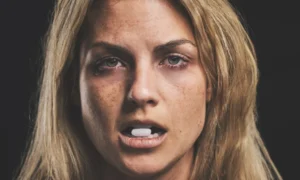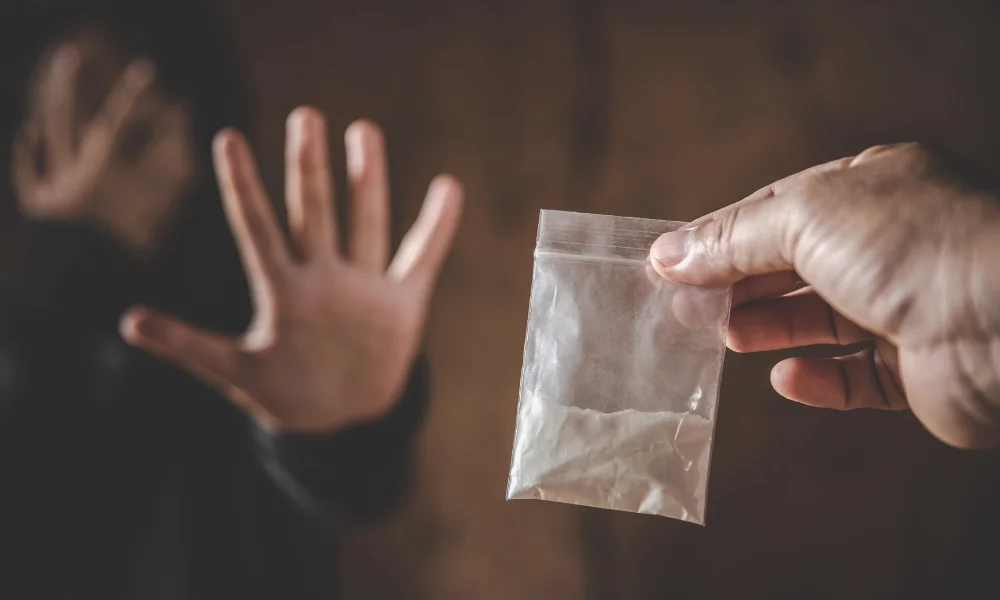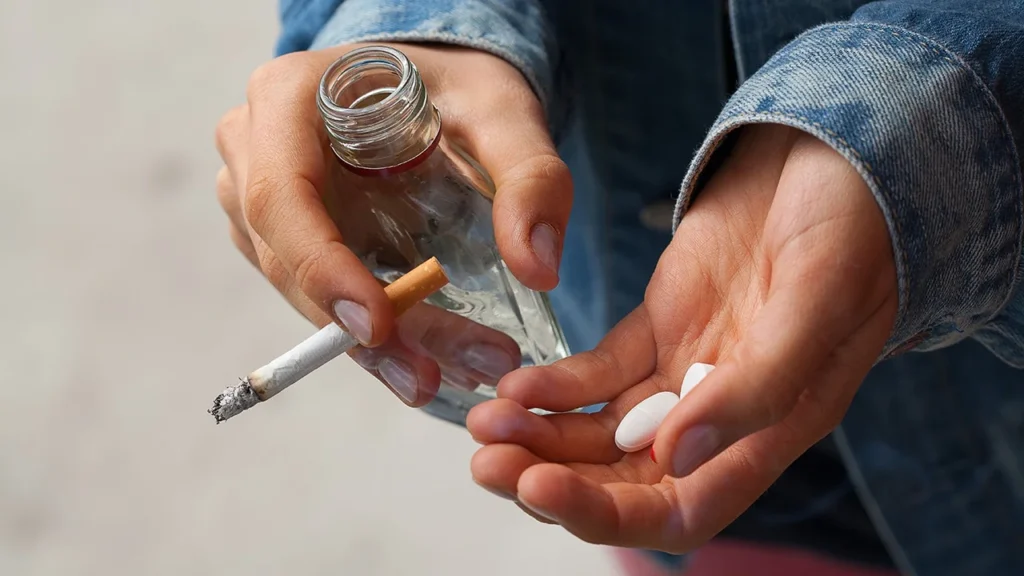Imagine feeling lost, watching someone you love struggle with a substance abuse disorder, or maybe you’re battling those challenges yourself. It’s hard to know where to turn or what to do next. You’re not alone in this journey, and there’s hope you can deal with it.
In this blog, we’ll walk you through the essential signs to watch out for, explaining how different types of substance abuse might affect you or someone close to you. You’ll discover the first steps to take towards getting help, what treatment options look like, and how to support someone during recovery.
So, whether you’re seeking information for yourself or trying to support a loved one, this blog is a simple, understanding resource designed to make sense of a complex issue. Let’s explore these steps together, finding clarity and support along the way.
Contents
- 1 What is a Substance Abuse Disorder?
- 2 What Are the Symptoms of Substance Use Disorder?
- 3 Types of Substance Use Disorders
- 4 What is Substance Use and Abuse?
- 5 Diagnosis of Substance Use Disorders
- 6 Treatment for Substance Use Disorders
- 7 Beyond Treatment: Maintaining Sobriety and Preventing Relapse
- 8 Get Help For SUD!
What is a Substance Abuse Disorder?
 A substance abuse disorder occurs when a person’s use of alcohol or drugs leads to health issues or problems at work, school, or home. This condition is more than just a challenge; it’s a complex disease that affects the brain and behavior. Over time, it can become increasingly difficult for someone to control their use of substances despite knowing the harm they can cause.
A substance abuse disorder occurs when a person’s use of alcohol or drugs leads to health issues or problems at work, school, or home. This condition is more than just a challenge; it’s a complex disease that affects the brain and behavior. Over time, it can become increasingly difficult for someone to control their use of substances despite knowing the harm they can cause.
Substance abuse disorders can involve a wide range of substances, including:
- Alcohol: Drinking to a degree that it causes repeated problems in your life.
- Prescription drugs: Using medication in a way not intended by a doctor, or using someone else’s prescription.
- Illicit drugs: Using drugs like marijuana, cocaine, heroin, or others illegally.
Each type of substance affects the body and mind differently, but all can lead to a substance use disorder if not handled properly. Recognizing the problem is the first step toward recovery.
What Are the Symptoms of Substance Use Disorder?
 Understanding the symptoms of substance use disorder can be a crucial step in recognizing the need for help, either for yourself or someone close to you.
Understanding the symptoms of substance use disorder can be a crucial step in recognizing the need for help, either for yourself or someone close to you.
Physical Symptoms:
- Changes in Appearance: Noticeable weight loss or gain, neglect of personal grooming, and unusual smells on breath or clothing.
- Health Issues: Frequent nosebleeds (common with cocaine use), tremors, or slurred speech. Unexplained bruises or infections can also be a sign.
- Tolerance and Withdrawal: Needing more of the substance to feel the same effects and experiencing withdrawal symptoms like shaking, nausea, or sweating when not using the substance.
Behavioral Symptoms:
- Neglecting Responsibilities: Skipping work, school, or neglecting home duties because of substance use.
- Risky Behavior: Engaging in dangerous activities, like driving under the influence or using dirty needles.
- Social Withdrawal: Isolating from family and friends and abandoning hobbies or activities that were once enjoyed.
Psychological Symptoms:
- Emotional Instability: Unexplained changes in mood, including irritability, bouts of anger, or increased anxiety.
- Compulsive Use: Strong cravings for the substance and spending a lot of time obtaining, using, or recovering from its effects.
- Denial: Underestimating the amount of substance used or the impact it has on life, often reacting defensively when confronted.
Recognizing these signs early can lead to timely intervention and greatly improve the chances of recovery. If you or someone you know is showing these symptoms, it may be time to seek professional advice.
Types of Substance Use Disorders
 Substance use disorders can involve a wide array of substances, each with its unique challenges and impacts on health. The most common ones include:
Substance use disorders can involve a wide array of substances, each with its unique challenges and impacts on health. The most common ones include:
1. Alcohol Use Disorder: Symptoms can include a strong craving for alcohol, inability to control drinking, and withdrawal symptoms such as shaking, sweating, and nausea when not drinking.
2. Prescription Drug Use Disorder: This type involves the misuse of prescription medications such as opioids (like oxycodone and morphine), sedatives (such as benzodiazepines), and stimulants (like those prescribed for ADHD).
3. Illicit Drug Use Disorder: Illicit drug use disorder includes the abuse of illegal drugs such as heroin, cocaine, methamphetamine, and ecstasy. These substances are particularly dangerous because they can lead to rapid addiction and have severe, even lethal, health risks due to their unregulated nature.
4. Cannabis Use Disorder: Though often perceived as less harmful, cannabis can also lead to a substance use disorder.
Each type of substance use disorder requires a different approach to treatment, tailored to the specific substances involved and the individual’s unique circumstances. Recognizing the particular type of disorder is crucial in seeking the most effective treatment and support.
What is Substance Use and Abuse?
Understanding the difference between substance use and abuse is crucial in identifying when casual or controlled use transitions into problematic behavior.
Substance use involves consuming alcohol or drugs at levels or in ways that are socially or medically acceptable. For example, having a glass of wine at dinner or taking prescribed medications according to a doctor’s instructions falls under substance use.
Now substance abuse, on the other hand, refers to a pattern of using alcohol or drugs that leads to significant issues or distress. It means using substances in ways that are not medically recommended or socially acceptable.
Remember, the transition from use to abuse can often be subtle and gradual. It may start with increasing the frequency or quantity of substance use, ignoring the negative consequences it starts to bring. Therefore, recognizing this shift early is essential in preventing the development of a full-blown substance use disorder.
Diagnosis of Substance Use Disorders

Diagnosing a substance use disorder isn’t as straightforward as taking a single test. Instead, it involves a comprehensive evaluation by a healthcare professional, who will look at various factors to understand the extent of the problem and the best approach to treatment. This includes:
- a detailed discussion about the individual’s usage patterns, behaviors, and the consequences of their substance use.
- a review of medical history which helps to rule out any other possible causes of symptoms.
- drug tests, including urine, blood, or hair tests, can provide direct evidence of recent use of substances and help in confirming the diagnosis.
Now, the most important way to determine the severity of a substance use disorder is based on the number of symptoms present:
- Mild: Presence of 2-3 symptoms.
- Moderate: Presence of 4-5 symptoms.
- Severe: Presence of 6 or more symptoms.
The number of symptoms not only helps in diagnosing the disorder but also in determining the intensity of treatment needed.
By tailoring the diagnosis and subsequent treatment to the individual’s specific needs and symptoms, healthcare providers can offer the most effective support, increasing the chances of a successful recovery.
Treatment for Substance Use Disorders
Treating substance use disorders involves several steps, each tailored to the individual’s needs based on the severity and type of the disorder.
Detoxification
The first step in treating most severe substance use disorders is detoxification, often simply called detox.
- This process involves clearing the body of drugs and alcohol under medical supervision and is designed to manage withdrawal symptoms safely.
- Depending on the substance and duration of use, detox can last from a few days to several weeks.
- Medical professionals may use medications to ease withdrawal symptoms and prevent complications.
Therapy
 After detox, therapy remains a critical component of treatment for substance use disorders, focusing on both the psychological aspects of addiction and strategies for long-term recovery. Several psychotherapeutic techniques are commonly used, each with its approach to addressing the complexities of addiction.
After detox, therapy remains a critical component of treatment for substance use disorders, focusing on both the psychological aspects of addiction and strategies for long-term recovery. Several psychotherapeutic techniques are commonly used, each with its approach to addressing the complexities of addiction.
- Cognitive Behavioral Therapy (CBT): CBT is a popular therapy method that helps patients identify and change negative thinking patterns and behaviors related to substance use. It teaches individuals to recognize their triggers for drug or alcohol use, develop coping strategies to deal with these triggers, and replace negative thoughts and behaviors with healthier ones. CBT is highly effective in helping individuals maintain sobriety by equipping them with practical skills for handling stressful situations and emotions.
- Dialectical Behavior Therapy (DBT): This therapy focuses on helping patients build skills in four key areas: mindfulness, distress tolerance, emotion regulation, and interpersonal effectiveness. DBT is particularly useful for individuals who experience intense emotions and have difficulty managing these emotions without using substances.
- Acceptance and Commitment Therapy (ACT): In the context of substance use disorders, ACT helps patients align their behaviors with their broader values and goals, which can be a powerful motivator for maintaining sobriety.
By addressing the psychological underpinnings of addiction, these therapies help to build a strong foundation for long-term recovery.
Rehabilitation Programs
Rehabilitation programs can be outpatient, where individuals attend treatment sessions but live at home, or inpatient, where they stay at a treatment facility. These programs typically involve a combination of therapy, support groups, and sometimes educational sessions about addiction. The length of these programs can vary, typically ranging from 30 days to over a year for residential treatment.
Medication-Assisted Treatment (MAT)
For some types of addiction, medications can be an essential part of treatment. For example, MAT for opioid addiction can include medications like methadone, buprenorphine, or naltrexone to reduce cravings and withdrawal symptoms. This treatment approach is often combined with behavioral therapies.
Support Groups
Participation in support groups like Alcoholics Anonymous (AA) or Narcotics Anonymous (NA) can provide ongoing support during and after formal treatment. These groups offer a community of individuals who share their experiences, strength, and hope with each other, helping members to maintain sobriety.
The combination of these treatment methods aims to provide comprehensive care that addresses not just the physical aspects of addiction, but also the psychological triggers and the social factors that play a crucial role in recovery. By approaching treatment with a multifaceted strategy, individuals have a better chance of achieving and maintaining sobriety.
Beyond Treatment: Maintaining Sobriety and Preventing Relapse
 Maintaining sobriety after completing a treatment program involves a long-term commitment and a multifaceted strategy. Here are some strategies for sustaining recovery and preventing relapse:
Maintaining sobriety after completing a treatment program involves a long-term commitment and a multifaceted strategy. Here are some strategies for sustaining recovery and preventing relapse:
- Lifestyle Changes: Establish a daily routine that includes regular exercise, adequate sleep, and nutritious meals.
- Stress Management: Incorporate stress-reducing activities like yoga, meditation, or hobbies that keep you engaged and relaxed.
- Continued Counseling: Regular sessions with a therapist can provide ongoing support and help address new challenges.
- Sober Activities: Participate in community events or group activities that are alcohol and drug-free to reinforce a sober lifestyle.
- Learn about Relapse: Understanding the signs of relapse and how to deal with them can empower you to act early if challenges arise.
By combining these strategies, individuals can strengthen their resilience against relapse, building a supportive and sustainable framework for a sober life.
Get Help For SUD!
If you or someone you love is struggling with a substance use disorder, don’t wait to seek help. At QuitMantra, our team of experts is ready to support you through personalized counseling sessions tailored to your unique needs.
Take action today by scheduling a session with one of our experienced counselors. We understand the challenges of addiction and are here to provide compassionate and effective support.
For more information on our services and resources, visit QuitMantra.
Don’t let another day pass by. Recovery is a journey that begins with a single step. Let QuitMantra be part of your path to a healthier, substance-free life. The time to act is now—reach out today and regain control of your life!
